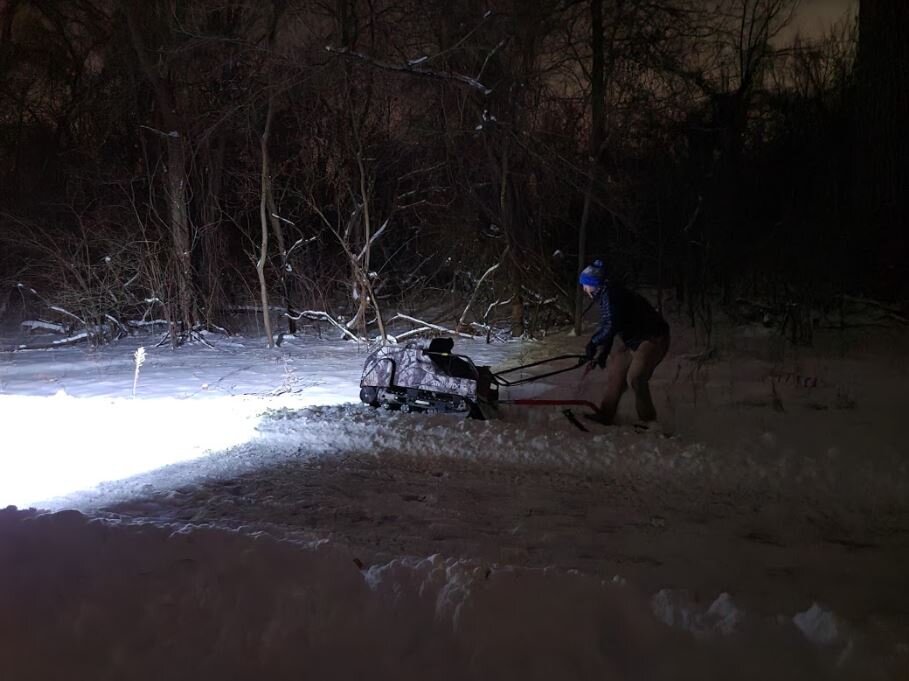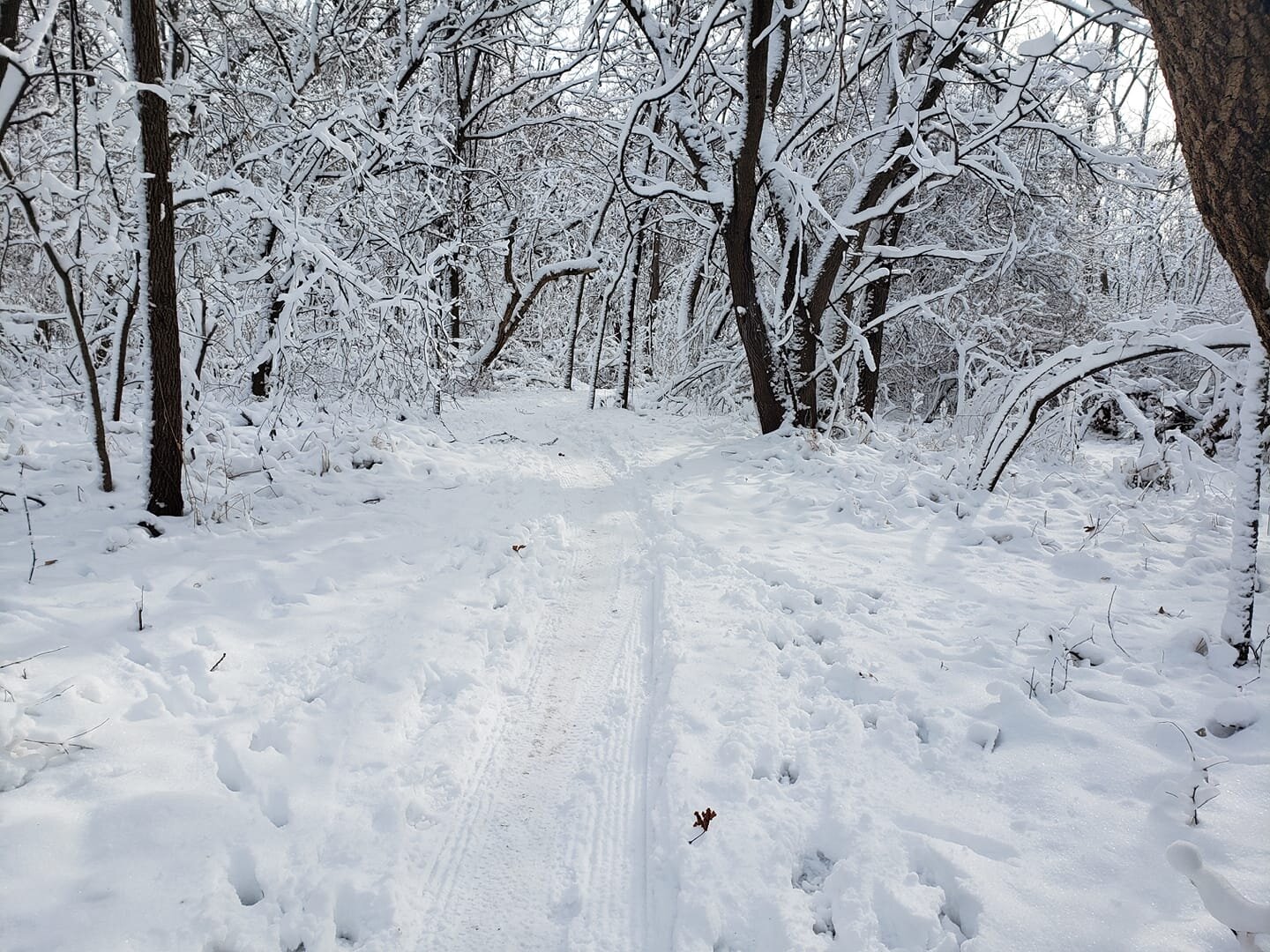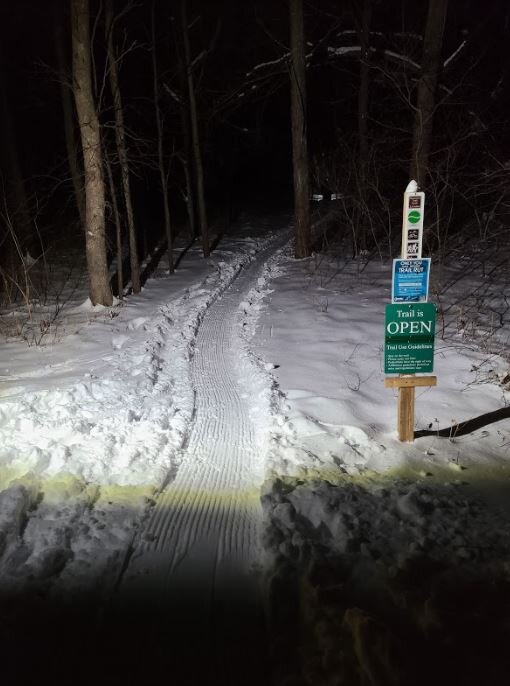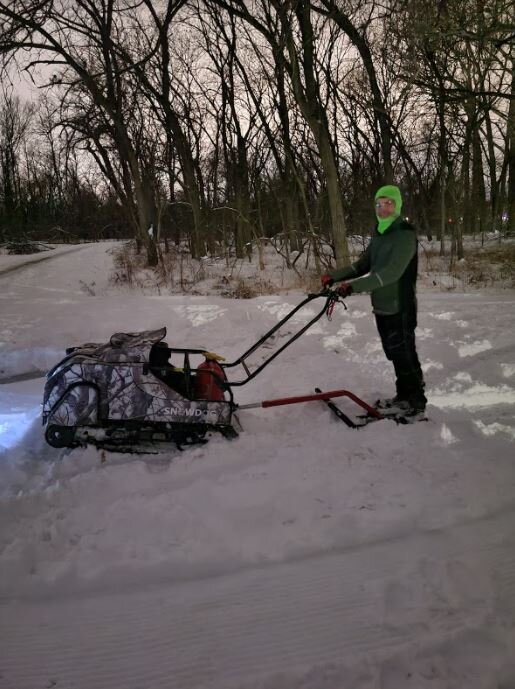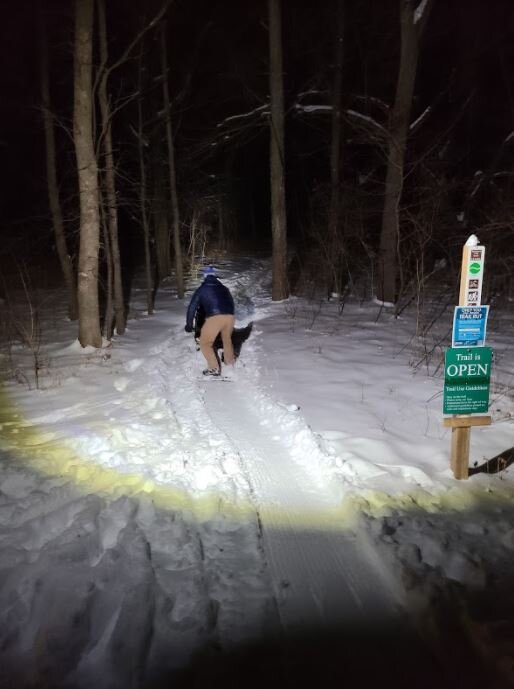groomed trails, riding in the snow, and more explained
Winter Grooming & Trail Usage
Updated: Winter 2021
CITA has a new trail tool in our arsenal: A Snowdog! The primary use of the Snowdog is for grooming trails in snow. This is a new activity for us, so practices will continue to evolve as experience is gained and feedback received. Here’s what you should know about the Snowdog—and groomed trails—for now:
Groomed Trail Etiquette
ALL of CITA’s trails are multi-use. This does not change when the trails are groomed. If you have the option, use snowshoes or fatter tires (i.e., fatbike or plus tires) when you are out on the trails. If you don’t have a fatbike, we recommend running a lower tire pressure than you would normally on dirt. This makes for a more enjoyable ride and also helps keep the trail in good shape for the next user. Hikers and cyclists with skinnier tires may still utilize CITA’s groomed trails.
We ask that other trail users to not “police” the trails. These are public trails, and all trail users should be respectful of each other. As always, only human-powered vehicles are allowed per land manager rules.
Trail Status
The best place to check on the status of a groomed trail or trail in general is on Facebook, either the main CITA page or the trail-specific page. While volunteers work together to schedule grooming for each location, we cannot groom all of the trail systems in a single night. If you want to wait until a trail is groomed, we recommend exploring other areas you don’t normally visit, or be the first to break trail.
Current locations tagged for grooming include:
Other areas are being evaluated, and a fat-bike specific area may be identified in the future.
BEST PRACTICES FOR WINTER RIDING
Pay attention to the trail status on the CITA Trail Status page as well as the signs posted at local parks.
Don't use frozen trails when the temperature is above freezing.
Use frozen trails early in the morning before they have a chance to warm.
Don't ride if the temps are hovering around freezing and it is sunny. Wait until temps are below 28F and even then there may be thawed areas.
If after following all the above guidelines and the trails are still too soft, turn around and come back another time. A single user can damage thousands of feet of trail under these conditions.
Please respect the trails over the colder months so everyone can maximize their enjoyment come spring time. Hundreds of volunteer hours go into creating and maintaining these trails each year.
If there is snow on the ground is OK to ride/hike?
In most cases it is OK to use trails when they are snow covered but if the ground below is not frozen and there is only a thin covering of snow it may still cause ruts/footprints. Use your best judgement and turn back if you're leaving tracks in the trail.
What are freeze thaw cycles and how do they affect dirt trails?
Freeze thaw cycles refer to the thawing and refreezing process soils experience during colder months. Air temperatures hovering around freezing and variance in solar irradiance throughout the day are the driving factors for freeze/thaw cycling. Dirt trails are extremely prone to rut damage during the transition to/from winter because of this process. During freezing, soil particles are forced apart by expanding ice crystals which essentially de-compacts the trail bed. When these ice crystals melt with warming daytime temps these small spaces fill with water and form a very liquid like mud. Trails in this condition have almost no mechanical strength to support the weight of users. Water logged dirt the consistency of pudding or peanut butter is not uncommon during the spring thaw. It's very easy to make deep ruts when the dirt is in this condition since the frost de-compacting action can reach several inches in depth.
Is it OK to ride fatbikes in freeze/thaw conditions?
While fatbikes have lower ground pressures than regular mountain bike tires and even walking, they can still form ruts and degrade trails during freeze/thaw conditions. We advise against riding ALL bikes on dirt trails when conditions are not suitable.
Do freeze thaw closure conditions ONLY apply to bikes?
No. Both bikes and foot traffic have negative impacts on muddy trails. The ground pressure exerted by walking is nearly the same as a rolling mountain bike tire and can cause similar damage to muddy/soft trails.
Why are ruts bad for trails?
Expanding ice crystals loosen the compacted trail surface creating cavities that trap water. Result: a pudding like mud when thawed.
Ruts in a trail collect and channel water causing increased erosion of the trail surface and trap water which slows the drying process after rain events. Trails are built with outslope to shed water much like a paved road. Ruts disrupt this water shedding action and can allow water to flow along, instead of across, the trail. Concentrated flowing water following the ruts, typical during heavy spring/summer rains, can then pick up soil particles and wash them away. This can leave behind deeper ruts tens or hundreds of feet long in extreme circumstances.
Ruts and footprints also hold pools of water on the trail surface which causes saturation of the soil and greatly slows drying. If these puddles are disturbed by users they can quickly turn into large mud pits. People naturally try to avoid the mud by walking/riding around the puddles which only makes the mud pit grow wider and harder to repair. Fixing these areas eats up trail volunteer time that could be better focused on other projects. Wet areas like this also greatly prolong trail closures since they dry very slowly. Ride/walk through the middle of a mud pit for the least trail impact.
HOW DO YOU RIDE IN THE SNOW?
Lower your tire pressure. Wider tires at low pressures allow you to “float” on top of the snow instead of breaking through. If you’re still having trouble staying on your bike, continue to lower your tire pressure.
Biking in the snow takes a lot of energy. Start with short rides so you know what to expect.
NECESSARY CONDITIONS
For the Snowdog to be effective, there needs to be at least 6” of snow on the ground for an ini- tial grooming. Temperatures also need to be below 30 degrees so the snow does not melt during grooming and form an icy crust
GROOMING PROCESS
Grooming is best done at night, when there is no sun to melt the snow and no users on the trails. Only one person can stand on the Snow- dog grooming platform while they navigate it through the trails. This person or an advance crew will also need to clear any downed branches or trees caused by snowfall.


